#Outdoor Education
Text
Shout out to the National Park Service for doing the work 🌲 🏔️ 🦅🌵🦌🍄🍂🌳🏕️

And a reminder to hug your local park ranger, but ask first, not all of them like it
#national park#nature#national park service#national parks#park ranger#the great outdoors#protect our wildlife#wildlife#conservation#outdoor education#naturecore#nature conservation#can you paint with all the colors of the wind
193 notes
·
View notes
Text
Why Are So Many of My Foraging Classes Online?
Fall semester has started, which means a whole new round of classes. While I don’t get as much consistency in who’s attending compared to someone teaching credit courses where an entire cohort may take multiple classes from the same instructor, I still get to enjoy both the fun of meeting new students, and also seeing some familiar faces from folks who decided to take another class from me. It’s also a time for fielding a variety of questions leading up to various classes; some of them are unique, but I can usually count on a roundup of the usual queries like whether students will need any materials, if online classes will be recorded, and whether the term “remote” on a foraging class equals “foraging classes online” or “foraging classes in remote areas.” (I didn’t choose the term; it’s one that some of the community colleges and other venues I work with prefer.)

I always clarify that remote classes are, in fact, online. It may seem a little counterintuitive to be holding a class on looking for edible mushrooms and plants virtually. But there are a few good reasons for it.
First, while I was teaching pre-pandemic, I and many other educators ramped up our Zoom classes when people went into lockdown at the beginning of the pandemic in late winter of 2020. That coincided with a surge in interest in foraging classes at the same time. Some folks were now sitting with a bunch of time on their hands where they didn’t have to work, and thought about things they wanted to learn about but had never had the time for. Others were concerned about the food shortages at grocery stores, worried that the pandemic would exacerbate issues with supply lines, and wanted to look for alternative ways to acquire food. So I put together the online mushroom hunting and PNW foraging classes I’ve taught since then.
And they’ve been continually popular ever since then. The one silver lining of the pandemic was that it increased the infrastructure for online classes, making them more appealing and accessible to people, as well as easier for instructors to use. I’d never even used Zoom prior to that point, and while it’s been a bit of a learning curve since then I’ve mostly gotten the hang of it.
But I also like online classes because they’re accessible. I can offer a variety of one-time classes through numerous venues, often with regional information customized into each class, and people can choose from multiple dates and times. Moreover, not everyone is physically able to go out into off-trail land looking for mushrooms or plants for several hours, but they still may be interested enough in foraging in less rugged places at their own pace and want a concise introduction to what they need to know to get started. And some folks who are immunocompromised aren’t comfortable going to in-person classes, whether inside or outside, so online classes are a safe alternative.

Time is also a consideration; it’s a lot easier for people to set aside a couple of hours to listen to a Zoom class on a weekday evening or Saturday morning, than to commit to traveling to a place, spending X number of hours out in the field, and then traveling back home. I’ve even had attendees multitask during classes with household chores, making art, etc.–as long as they can pay attention to their satisfaction, I’m fine with it. It’s also not uncommon for someone to be unable to attend the live class, but to watch the recording instead and email me questions afterward.
And, of course, there’s the fact that I live three hours away from Portland and about the same distance away from the Olympia-Tacoma-Seattle area, where a lot of my classes are based. I wouldn’t be able to teach nearly as much if I did everything in person. At this point I offer the better part of 100 individual class sessions a year, hosted by venues from Oregon to Connecticut, and having most of my nature and foraging classes online means I can reasonably reach a lot more people who wouldn’t have access to my in-person classes.
Is it the same as going out in the field and foraging? Of course not. I can give people detailed information on identifying new-to-them species, and tips for safe and effective foraging, and some photos of beginner-friendly plants and mushrooms. But that’s not equivalent to going out to a place, exploring it on foot, and seeing different species in the context of their habitats, handling them and doing live identification right there in the field.
Sometimes I’m able to offer a workaround; every spring, summer, and fall through Portland Community College, for example, I offer a Nature ID Field Day open to anyone who has taken any of my online identification classes (foraging, mushrooms, birding, etc.) It’s a chance for participants to make use of the identification skills and tools we discussed online, and try them out in person. While we don’t only focus on foraging, we usually find some things along the way that happen to be edible. Plus it’s a good excuse to spend a few hours outside with other nature nerds!

And I do other in-person events now and then for various venues,like nature walks and indoor classes. Plus I’m trying to get the immense amount of paperwork pulled together to legally be able to offer independent guided tours in 2023, which will provide even more opportunities to work with people in person in the field.
But I will always have some natural history and foraging classes online, because I think it’s an incredibly important format for reasons I’ve already described. It’s not for everyone; some folks will always prefer in-person events, and that’s completely understandable! From the feedback I’ve gotten, though, demand for online classes isn’t going anywhere anytime soon, and I’m glad I can make them available to so many people.
Did you enjoy this post? Consider taking one of my online foraging and natural history classes, checking out my other articles, or picking up a paperback or ebook I’ve written! You can even buy me a coffee here!
#foraging#nature#classes#foraging classes#mushrooms#wild foods#outdoors#accessibility#long post#insects#bugs#hiking#outdoor education#wildlife#online classes#mushroom hunting#mushroom foraging#nature nerds
18 notes
·
View notes
Text
4 Fun Activities to Connect Kids With Nature
Children learn most effectively when given the freedom to explore, create, manipulate, and get hands-on. These concepts are uncomplicated, enjoyable, and require little preparation, and your little ones will thoroughly enjoy discovering the world around them.
Easily incorporate these outdoor tasks into homeschool curricula or engage in structured outdoor activities with your children. Immerse…
#connect with nature#fun nature activities#kids outdoor activities#Learning Through Nature#nature connection for kids#nature exploration#Nature-Based Learning#outdoor discovery#Outdoor Education#outdoor learning activities#outdoor learning benefits#outdoor play for children
0 notes
Text
Here's What I Get Out of Backpacking
There is something about having to carry all that you’re going to need to live in the wilderness for days on your back that makes you question your entire life. Hiking heals, but backpacking takes it up a notch as you discover what is most important.
There is something about having to carry all that you’re going to need to live in the wilderness for days on your back that makes you question your entire life. You begin to whittle down what you’re going to need to just the essentials as you pack. You find out what is important to you and in life in general as you carry the heavy weight of all your packing choices on the trail. You realize that…

View On WordPress
#backpacking#finding yourself#hiking#life#Nature#outdoor education#outdoors#Outward Bound Adventures#summer#Travel
0 notes
Text
Arthur Morgan School was founded by Elizabeth and Ernest Morgan in 1962 to provide a learning environment tailored for children in their early teenage years. Ernest Morgan was the elder son of Arthur Morgan. Arthur and his wife Lucy had cherished the idea of starting a small school in a rural setting that fostered initiative, responsibility, and imagination.
Many educators influenced Elizabeth Morgan in the formation of their philosophy of education, including Johann Pestalozzi, N.S.F. Grundtvig, Mahatma Gandhi, Maria Montessori, John Dewey, and Arthur Morgan. The philosophy and methods of these great educators emphasize the development of the whole person through a combination of study, work, and social interaction in a community. As leaders in progressive education they each valued practical education as an extremely important experience in order for men and women to be enlightened. In addition, they stress inner motivation and the responsibility of the individual as a part of the whole. To these ideas, Elizabeth her own Quaker values of simple living, consensus decision-making, and non-violent problem solving.
Both Elizabeth and Ernest Morgan were very active in many causes. Elizabeth collected workers’ songs from all over the world and used them to educate people about suppression and exploitation. She had been active in the struggle against the Ku Klux Klan persecutions and racist assaults in Georgia. She arranged protest marches and helped the strikers in their attempt at getting better pay and fair treatment. In most cases, she used music and song as a means to arouse people’s solidarity and to inform them of both traditions and visions. Early in their marriage both Elizabeth and Ernest had joined the Society of Friends, or Quakers. They felt that the Quaker way of silent worship, work for social justice, resistance to the military and violence, and equality for all people, especially women, were very consistent with their views. Today, AMS incorporates many Quaker traditions into its daily life.
Their youngest son Lee attended Camp Celo in Celo Community, North Carolina. In 1958, when the camp was about to be laid down by its owners, Elizabeth and Ernest decided to join another family, the Barrus’s, to continue the camp. It was at this time that Elizabeth decided to take the first steps to establish a school. The school would be able to become part of the Celo Health Education Corporation, the non-profit corporation that also governed the Celo Health Center. (In the 1990s, the school became its own financial entity with a volunteer Board and non-profit status.) Members of Celo Community gave her lots of encouragement and they were willing to provide land for a negligible cost.
From 1958 until the school opened in 1962 family work camps were held in the summer to improve the few buildings that were on the property. A long, low barn for chickens, basement room, and brooder house were turned into a kitchen, dining room, classrooms, workshop, and laundry. This experience revealed to Elizabeth and Ernest Morgan the enthusiasm junior high students had for doing real work.

#Quaker school#Outdoor Education#middle school#junior high#high school#Friends School#boarding school
0 notes
Text
youtube
#outdoor education#outdoor parenting ideas#outdoor parenting tips#family safety#parenting tips#parenting advice#outdoor exploration#outdoor adventures#outdoor parenting#outdoor activities#outdoor learning#outdoor safety#safety tips#child safety#children's safety#parenting hacks#safety for kids#kids safety#outdoor play#outdoor fun#Youtube
1 note
·
View note
Text
#Liverpool John Moores University#LJMU#IM Marsh Campus#higher education#undergraduate studies#postgraduate studies#professional courses#technical courses#Dance Studies#Sport Development#Physical Education#Applied Community Studies#Social Studies#Community Nutrition#Consumer Studies#Marketing#Food and Nutrition#Home Economics#Tourism Management#Education Studies#Outdoor Education#Adventure Tourism#OFSTED inspections#TTA category A status#PE secondary initial teacher education#Liverpool#LJMU popularity#quality teaching#personal tutoring#academic facilities
0 notes
Text
I delivered my first lesson plan in front of one of my classes today! They are all a few years ahead of me so it was pretty nerve wracking, but I think it went really well! It was a trauma informed/healing centric lesson about connectivity and environmental degradation geared towards K-2nd.
I wanted to focus on the feeling of helplessness a lot of young learners get from learning about the environment, and teach them it's okay to feel those big feelings, and even though there are bigger systems that hurt the Earth working together and building your community around helping the earth can still make a difference. I really wanted to emphasize that students can still help the earth without pollution coming through as an individual/carbon footprint issue. I have so many thoughts about where else I can go with the plans I have.
#education#educators#outdoor education#I feel like theres a likelihood that people i go to school with are also on Tumblr so if you know no you don't#lesson plan#teaching#teachers#college
1 note
·
View note
Text

Early Childhood - Caring for Animals
This student is intently watching on of our chickens eating the feed she spread on the ground. Having animals to care for helps teach responsibility, compassion, empathy, and an understanding and respect for other living things. Animals teach children to value life other than their own, in addition to teaching them about the natural growth and life cycles of many different species which they can observe on a daily basis. Another benefit is the stress reduction that occurs as a result of observing and interacting with the animals, from which both the children and the animals can benefit.
#animal husbrandry#sustainability#care for animals#purposeful activity#outdoor education#social-emotional development#hands on learning#independence#responsibility#compassion#empathy#respect#tma#montessori#private school#arlingtontx#arlington#texas#infant#nido#toddler#early childhood#preschool#kindergarten#elementary#education#private education#nontraditional#the montessori academy of arlington
0 notes
Text
The yearly return!
As per usual I have returned from my 6 months work abroad and will be posting all the stuff I made and never got a chance to post. Expect more posts for at least a month or so before I'm off travelling again.
#crafts#art#work abroad#seasonal worker#wannabe canadian#outdoor education#summer camp#needle felt#needle felting#punch needle#punch needle embroidery#custom toys#rubber ducks#custom rubber ducks
0 notes
Text
....we have an old outdoor training called Take It Outside and I just realized this means in like 50 years someone could conceivably call a similar training Go Touch Grass.
1 note
·
View note
Link
Trinity Grammar School offers boys a thoroughly Christian education and an outdoor education that guides them to a full life. Their outdoor education programme provides opportunities for self-discovery, building relationships, exploring new ways of being in community together, and providing time for self-reflection and spiritual growth in a unique environment. For more details, visit https://www.trinity.nsw.edu.au/2022/08/06/what-is-outdoor-education-in-nsw-schools/
0 notes
Text
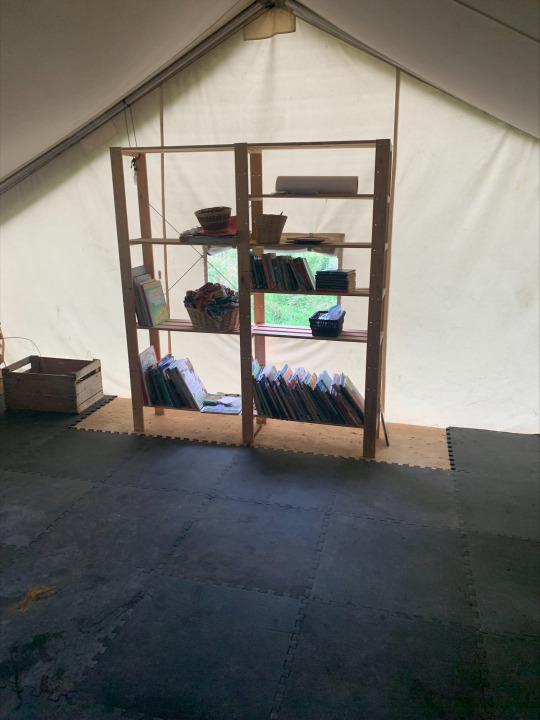
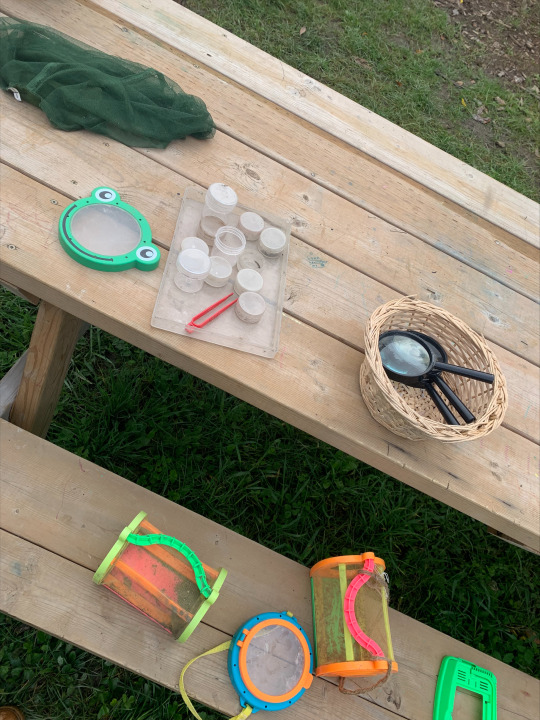

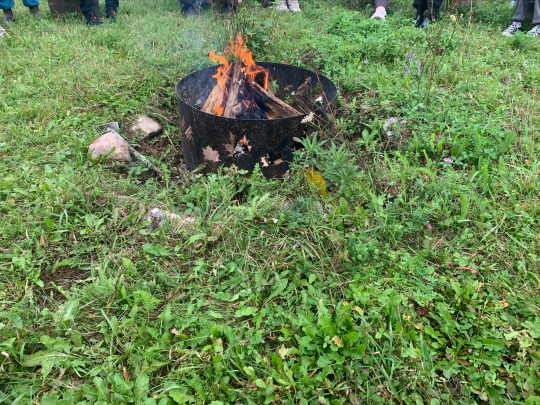
On Wednesday, September 21st, my class took a field trip to Out to Play Farm & Forest School. I absolutely adore the idea of a Forest School. In fact, it was my passion for outdoor education which partially motivated me to start the Early Childhood Education program at Algonquin, in the first place!
On the morning of our trip, students were lead on a brief walk through the woods by one of the Educators, a woman named Lara, until we came to a clearing in the wilderness. We were in a field; I noticed a green house looking building in the background and a firepit surrounded by logs. We gathered in a circle around the firepit while Lara introduced us to the concept of a Forest school, and what an average day in the program was like for the children who attended.
After our circle time, we followed Lara on a tour of the grounds. I noticed a puddle of muddy water with a plank across it, it intrigued me, so I snapped a picture. I wondered why there was a plank over the puddle, was it there to prevent the children from falling, or had a child placed it there intentionally so that they could practice balancing walking across it?
We continued, and I noticed what looked materials for a science activity out on a picnic bench. Again, I took a photo to document my observation. I noticed magnifying glasses, little mesh cages to catch bugs in, and even smaller specimen jars. The set-up reminded me of everything I have been learning in my Math and Science class about curiosity and experimentation, especially exploration of the natural world and the many academic opportunities the outdoors has to offer.
Next, we arrived at one of the tents on the Out to Play campus, one of a few indoor spaces at the program. I noticed there was a wood burning stove inside, mats on the ground for children to sit comfortably on, and a bookcase. I took another photo. I was reminded of what I had learned in my Environments for Young Children course last year and identified this area as a reading zone. Lara explained that in the winter season, the children also use the space to warm up and dry their wet clothes.
I greatly enjoyed our trip to the Forest School, I feel like I learned so much about what it is like to work in that kind of a program (which I want to do), as well as it was a chance to make real-world connections to the concepts I have been and am currently learning in my own program. This experience sparked my curiosity, and I wonder how the Educators manage the various health and safety risks that come with running an outdoor education program year-round in a climate that ranges from 30+ to -30… Lara showed us some paperwork that they had in the program identifying some risks and the actions they took to amend them, but I would like to know more information.
#forest school#early childhood education#ece#Outdoors#outdoor education#alternative education#school#academics#college#kindergarten#preschool#montessori#education#teacher#educator#nature#go outside
0 notes
Text
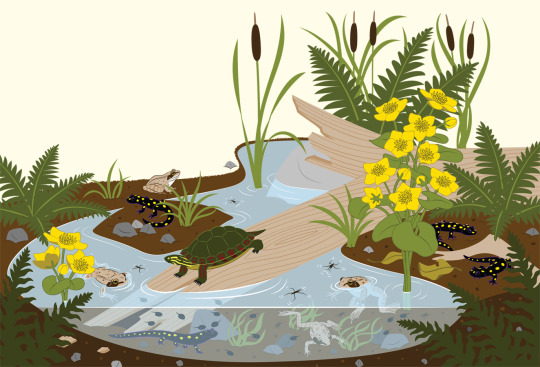

Went out to the pond to take this photo, and heard the first spring peepers of the year. Yay! It's officially spring in Downeast, Maine.
This illustration is one over 100 I did for the forth Nature Smarts activity book from Mass Audubon and Storey Publishing. Nature Smarts Workbook: All About Water, Ages 4-6 is available for preorder now, and out May 21st. You can find it through Amazon, Mass Audubon, and other book sellers.
#vernal#pond#pool#amphibians#frogs#illustration#jada fitch#art#maine#drawing#nature#naturalist#kid's illustration#kid#children's#outdoors#outdoor#activity book#outdoor activities#kids#workbook#ages 4-6#educational#mass audubon#homeschool#new england#wildlife#water#all about water#vernal pond
120 notes
·
View notes
Text
I finally made a uquiz! Tell me what cool ass woodland organism you are. I'm a professional and the result is based on science and definitely not just vibes
52 notes
·
View notes
Text
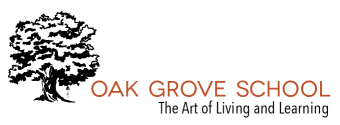
It is becoming more and more important in a world that is destructive and degenerating that there should be a place, an oasis, where one can learn a way of living that is whole, sane, and intelligent. Education in the modern world has been concerned with the cultivation not of intelligence, but of intellect, of memory and its skills. In this process little occurs beyond passing information from the teacher to the taught, the leader to the follower, bringing about a superficial and mechanical way of life. In this there is little human relationship.
Surely a school is a place where one learns about the totality, the wholeness of life. Academic excellence is absolutely necessary, but a school includes much more than that. It is a place where both the teacher and the taught explore not only the outer world, the world of knowledge, but also their own thinking, their behavior. From this they begin to discover their own conditioning and how it distorts their thinking. This conditioning is the self to which such tremendous and cruel importance is given. Freedom from conditioning and its misery begins with this awareness. It is only in such freedom that true learning can take place. In this school it is the responsibility of the teacher to sustain with the student a careful exploration into the implications of conditioning and thus end it.
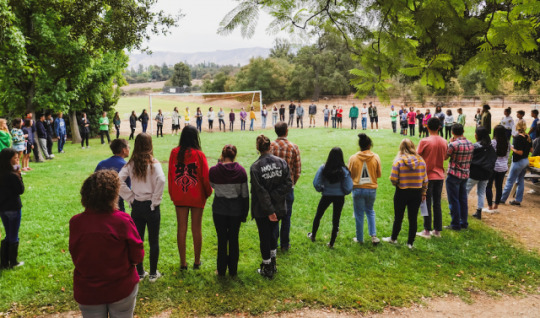
A school is a place where one learns the importance of knowledge and its limitations. It is a place where one learns to observe the world not from any particular point of view or conclusion. One learns to look at the whole of man’s endeavor, his search for beauty, his search for truth and for a way of living without conflict. Conflict is the very essence of violence. So far education has not been concerned with this, but in this school our intent is to understand actuality and its action without any preconceived ideals, theories, or belief, which bring about a contradictory attitude toward existence.
The school is concerned with freedom and order. Freedom is not the expression of one’s own desire, choice, or self-interest. That inevitably leads to disorder. Freedom of choice is not freedom, though it may appear so; nor is order, conformity, or imitation. Order can only come with the insight that to choose is itself the denial of freedom.

In school one learns the importance of relationship which is not based on attachment and possession. It is here one can learn about the movement of thought, love, and death, for all this is our life. From the ancient of times, man has sought something beyond the materialistic world, something immeasurable, something sacred. It is the intent of this school to inquire into this possibility.
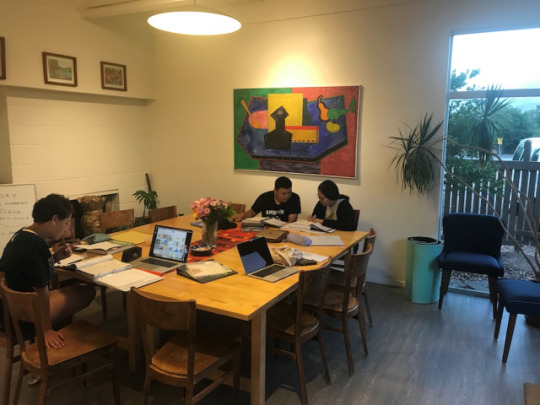
This whole movement of inquiry into knowledge, into oneself, into the possibility of something beyond knowledge, brings about naturally a psychological revolution, and from this comes inevitably a totally different order in human relationship, which is society. The intelligent understanding of all this can bring about a profound change in the consciousness of mankind.
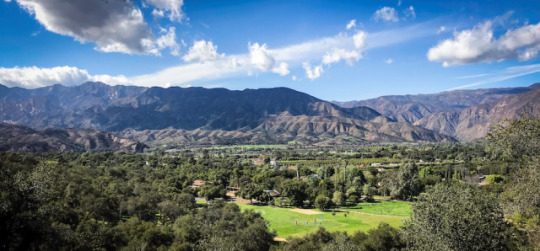
#small school#relationship based#progressive education#PK-12#Outdoor Education#krishnamurti#independent school#high school#college prep#boarding school
0 notes